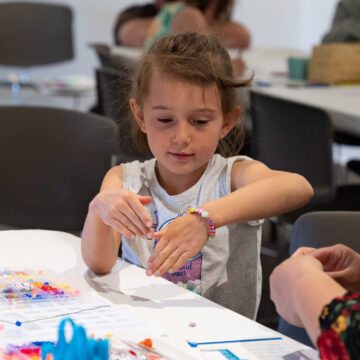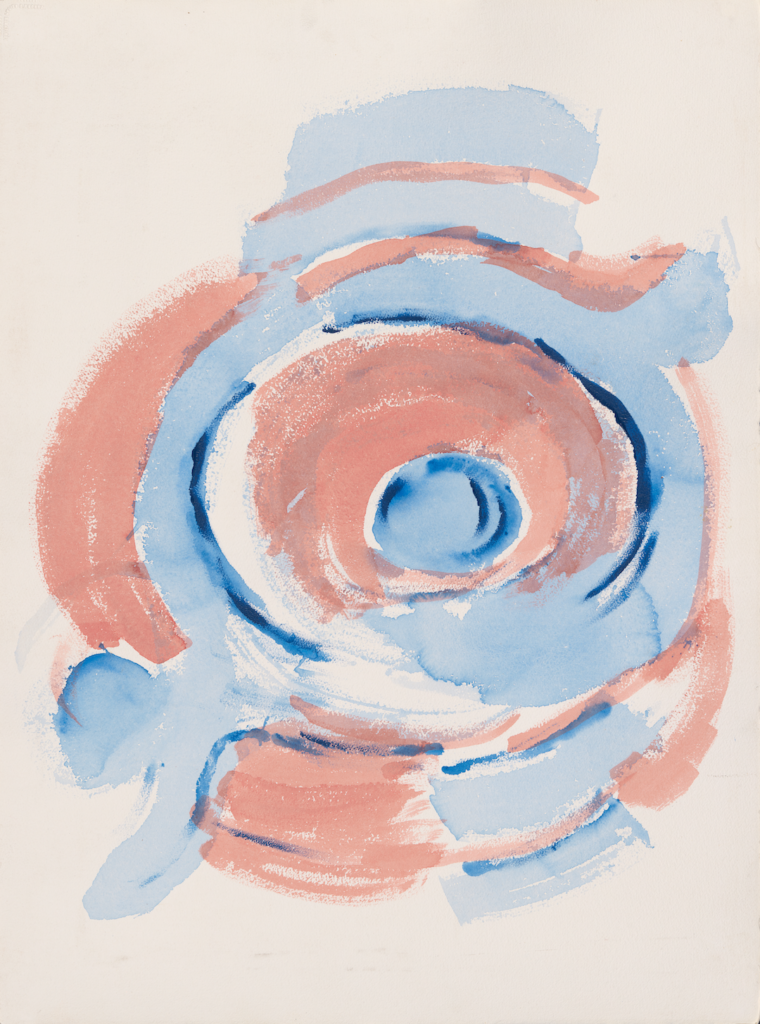Online Class: Color Theory & Paint Mixing for Watercolorists
Space is limited, registration required. Please email contact@gokm.org or call 505.946.1000 for assistance with event registration.
Join this class to clarify the key concepts behind clean and clear color-mixing in watercolor. Using cyan, magenta, and yellow as primaries, participants will learn through hands-on exercises how to make informed decisions to achieve predictable color mixes that are rich, vibrant, and transparent. A longtime educator in the field of color theory, Sudesha Sengupta will also break down paint-mixing fundamentals based on how paints are positioned in the color wheel. It is highly recommended that participants begin the class with a prepared palette with correct colors to achieve professional results.
—
This class is suitable for youth ages 12 and up. Children are welcome to participate alongside their adults.
Space is limited, reservations required.
This program will take place via the video conferencing app – ZOOM. Details for accessing the Zoom meeting will be with your receipt upon registering and again sent via email the day prior. Please register in advance in order to access the program. Note that all program times are in Mountain Time.
Online classes are not recorded. Online classes are offered only as a live and interactive experience.
Supplies needed for this class:
- Watercolor paints: While a set of half pans can be used for getting started, watercolor tubes in these or similar colors are recommended for better results: 1. Hansa Yellow, 2. Indian Yellow or Quinacridone Gold, 3. Vermillion, 4. Carmine, 5. Opera, Quinacridone Rose, Permanent Rose, Opera or Opera Rose, 6. Purple/Violet, 7. Ultramarine Blue, 8. Pthalo Blue or Thalo Blue, 9. Viridian, 10. Sap Green, 11. Leaf Green, 12. Burnt Sienna or Quinacridone Burnt Orange.
- Recommended brands of watercolor paint tubes:
- Student/Learner grade: Van Gogh, Grumbacher Academy, or W & N Cotman
- Professional grade: Holbein, M. Graham, Daniel Smith, or Winsor & Newton
- A 12-well circular palette with a larger center to mix paints. Jones Travel Palette is recommended.
- Watercolor block (preferred) or pad (tape-bound, not spiral-bound) of Fluid, Strathmore 400 series (not 300 series), Canson, or any other brand with acid-free 140 lbs (300 gsm) sheets in Cold-Press finish that is between 9” x 12” and 12” x 16” in size.
- A black Sharpie or other waterproof black marker
- A regular 2 pencil (a.k.a. HB) or 2B pencil
- A white eraser.
- Round and Flat Watercolor brushes (synthetic ‘Taklon’ brushes are fine): 4 to 5 Round brushes in the range of Size 6, 8, 10, 12, 14. Optional: a 1 Flat brush that’s 1⁄2” to 1.5” wide. Royal Soft-Grip Watercolor Round brushes work well.
- An ordinary 3⁄4” – 1” mop brush to be used as a clean-up brush after erasing pencil lines.
- Q-tips and paper towel or pieces of cotton rag. Cut-up pieces from a clean, used t-shirt work well.
- Masking tape if a watercolor pad is used instead of a watercolor block.
- 2 to 3 empty glass jars or containers for holding water. Used yogurt containers or wide-mouth smaller glass jars work well.
- Toothpicks and or a blunt plastic tool such as a disposable plastic knife for sgraffito technique.
- Optional: Hair dryer if available, a white wax crayon or a small piece of candle for optional resist techniques, watercolor pencils for additional details, a 12″ ruler.
The items above should be available locally or online from Amazon as individual items in the U.S and in Europe. They can also be purchased online as individual items or as a set from Sudeshna Sengupta’s class-list (U.S. domestic shipping only).
About the Instructor:
Sudeshna Sengupta’s career as a teaching artist spans multiple decades, continents, and cultures that inform her pedagogy for decolonizing studio art. She received her Master of Fine Arts degree in 1985 from Visva-Bharati, an international university founded in India, by the humanist poet Tagore, the first non-European Nobel Laureate (1913). After teaching art and design at the college level in New Delhi, Seattle, and California, she taught at NMSU-Alamogordo, where she established its first intaglio printmaking studio in 1995. Since moving to Santa Fe a few years ago, she has been teaching credit courses in online studio art at the Santa Fe Community College. She also conducts workshops and short courses and presents lectures and community-based art events for various age groups with civic, cultural, and community organizations in the US and in India, often with a focus on multicultural and inter-cultural experiences that emphasize human, cultural, and environmental connectedness through creativity. To see her art please visit Sengupta’s Instagram.
This class is being offered on a sliding scale.
$10; minimal fee.
$20; covers the cost of the class.
$30; covers the cost of the class, plus a contribution to support educational programs
Upcoming Events


Event Community Events
7/9
Create with O’Keeffe at the Abiquiú Library
El Pueblo de Abiquiú Library and Cultural Center | 29 Co. Rd. 187, Abiquiu, NM 87510

Event Community Events
7/10
Create with O'Keeffe: Cardboard Cookies
LA FARGE LIBRARY | 1730 LLANO ST, SANTA FE, NM 87505
